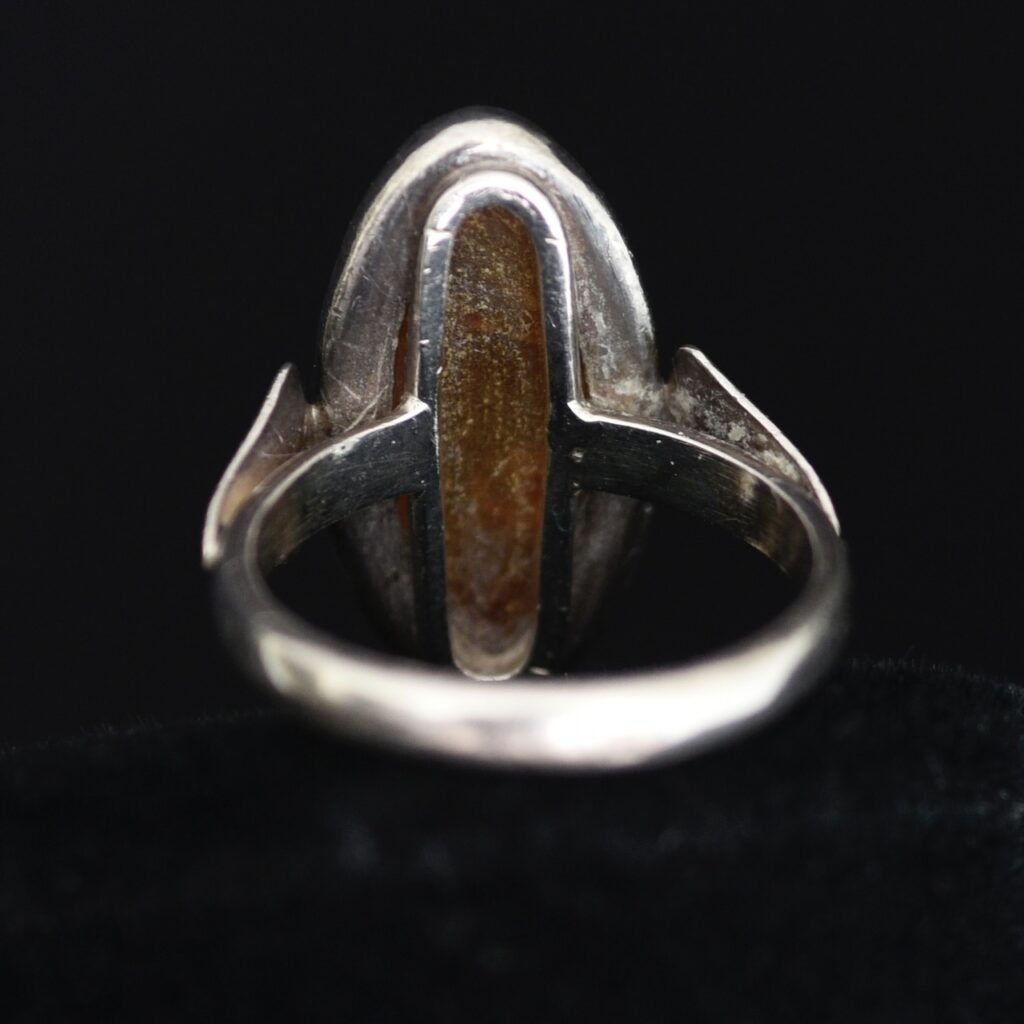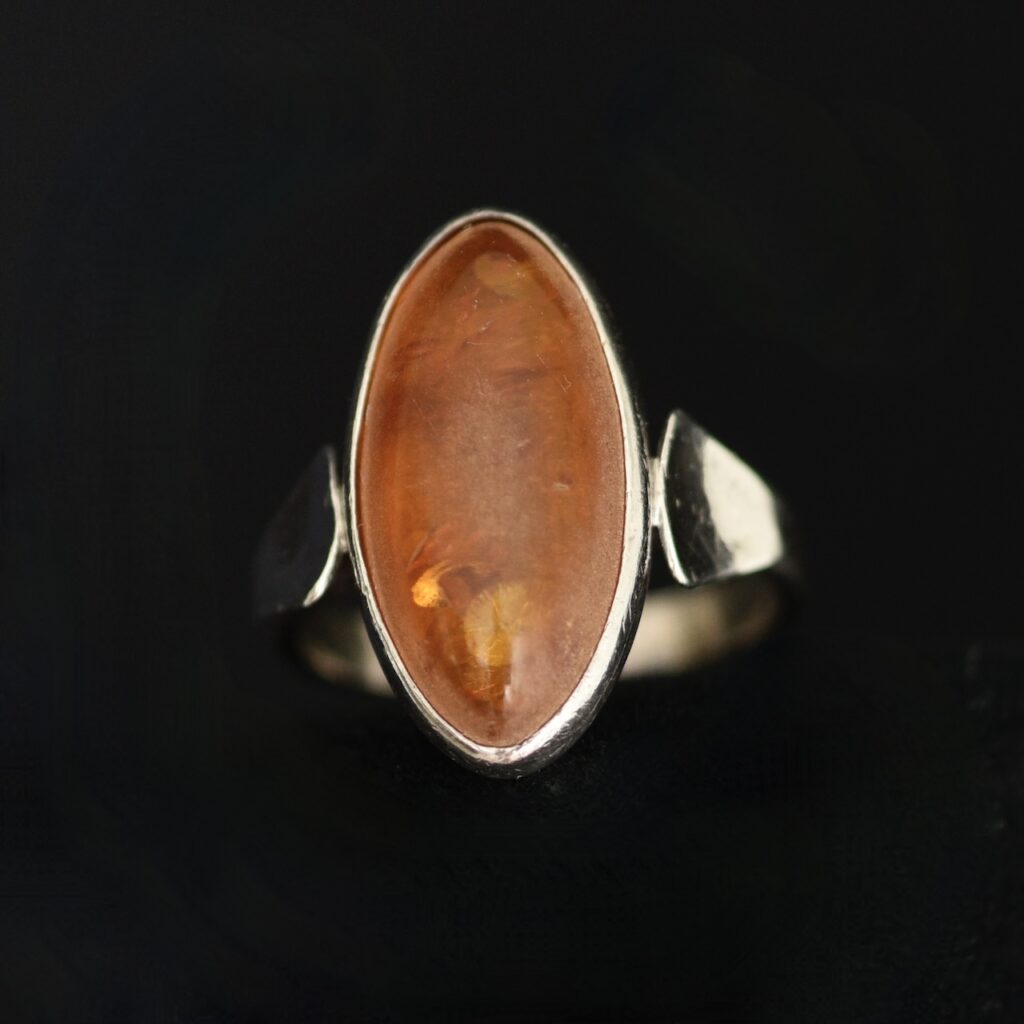Why You Should Not Put Amber & Certain Other Jewelry In An Ultrasonic Cleaner
An ultrasonic jewelry cleaner may seem like a good idea, but it does not make sense to use it for all jewelry, or to use it indiscriminately.
It is kind of similar to those who make the assumption you can throw antique and vintage textiles in the washing machine. Some things have to be hand washed using delicate detergents, and some things cannot be washed at all. In most cases you must hang the items to dry. Do not use a dryer.
When it comes to vintage and antique jewelry, sometimes it is better to just wipe the item with a damp cloth.
Certain pieces can be washed in a mild soapy water solution. It is good practice to use a small make up brush to clean, and dust the nooks and crannies.
Q-tips work well if you want to clean the metal, but do not want to damage the stones. Most glass stones can be cleaned with a spritz of Windex, and then rinsed and dried carefully with a lint free cloth.
Some things can be cleaned with a mild sterling silver cleaner. Not all sterling silver cleaners are mild. Some are extremely harsh, so much so that the entire room becomes filled with the smell of chemicals.
The liquid silver cleaners seem to be the most caustic, while the paste cleaners are milder. I usually use “Twinkle Silver Polish Kit”, which is a mild paste, and easy to apply to specific areas with a Q-tip.
An example of a liquid silver cleaner that you dip the jewelry into, is called “Hagerty Instant Silver Clean”. Beware of this one, and anything else that is described as instant, quick and easy. This silver cleaner is harsh, smells very strong, and will ruin gemstones. It might also ruin other things, especially sterling silver that has blackened areas as part of the design, or a shadow box effect.
I digress, back to the ultrasonic machine. Only a few pieces that are not fragile, not old, do not have any loose stones, are very solid, well constructed, and have hard and resilient gemstones, can withstand an ultrasonic cleaner. Personally, I would not even use one at all, after seeing the damage they can do.
Not that long ago a business man who took over his father’s jewelry store in Vancouver, and had been in the business more than fifty years, told me he used a dilute solution of Mr. Clean on diamonds, and other hard gemstones. He did not use an ultrasonic cleaner.
Ultrasonic cleaners use high frequency vibrations and shock waves to disrupt the accumulated dirt and grime, thus washing it off the item. They usually have a combination of water, and some type of cleaning solution.
They work by creating microscopic bubbles that implode and produce agitation or shock waves that strips the oil and grime away. Many people will say this is an effective way to thoroughly clean antique and vintage jewelry, as it supposedly gets into the crevices that cannot otherwise be reached.
I disagree. I have seen many things come out of an ultrasonic cleaner that are not thoroughly cleaned at all. The main reason they are used, is because it is fast, and cleans things in bulk.
I have brought sterling silver items home that were cleaned in an ultrasonic cleaner, and then cleaned the item by hand, because the ultrasonic cleaner in my opinion, does not do a very good job.
In fact anything that is antique, fragile, or porous – especially amber, pearls, ivory, and coral – should never go near an ultrasonic cleaner. If you are unsure of what the item is made of, don’t throw it in there.
Softer gemstones, and all organic material should not be put in an ultrasonic cleaner. Onyx and tanzanite are also too soft and porous for such a cleaning method.
Also certain plated metals such as enamels, and antique cloisonne jewelry should not be cleaned ultrasonically. A good rule of thumb is – when in doubt, don’t do it. You cannot undo the damage it does.
The following is an example of a sterling silver Baltic amber ring that was put into an ultrasonic cleaner. I bought it because the seller just pulled it out of the machine, and I was curious to see what it would look like when photographed.
Baltic amber has a glow that comes from deep within. It is almost like sunlight is captured inside. It has a unique luminescence when placed in sunlight.
It also changes colour to a blue, white or yellowish green when placed under a blacklight. In fact it is one of the most fascinating things to examine and photograph.
When you examine this ring, you can see it has lost its’ intrinsic luminescence. As you can see by the reverse side of it, the ultrasonic cleaner did not even do a good job.
It would have been much better to use a Q-tip, and a mild silver cleaner on the silver portion, and then use a soft brush to clean the back of it. After that rinse off all the residual silver cleaner with plain water, and then dry and polish with a soft linen cloth.
If it had been cleaned by hand, without using the ultrasonic method, it would have a rich glow, and show off the bits of foliage, insect wings etc. that get trapped inside the tree resin. But alas, this one bites the dust.



